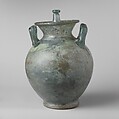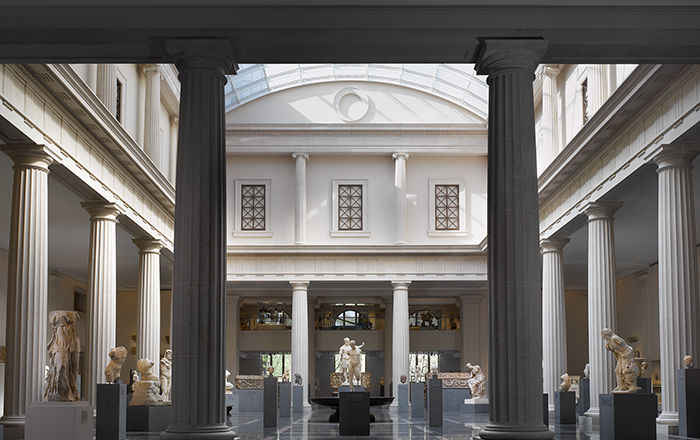Glass cinerary urn with lid
Urn: Translucent blue green; handles in same color.
Everted tubular rim, folded over and in, and smoothed into side of mouth; funnel-shaped neck; ovoid body; splayed hollow foot; almost flat bottom; two vertical, arched M-shaped handles, attached on opposite sides of upper body, each made of a thick trail, applied as a large circular pad, drawn across body from left to right, and trailed off back along top of handle.
Intact; few bubbles, black impurities in handles; slight dulling, faint iridescence, and some soil encrustation on exterior, large patches of soil encrustation and iridescent weathering on interior.
Lid: Translucent pale blue green.
Thick rounded rim, with groove around edge on underside; flat side; hollow cylindrical stem, tapering upwards; circular flattened knob applied at top.
Intact; some pinprick and a few larger bubbles; dulling and slight iridescent weathering, mainly on upper surface.
The lid fits snugly in the mouth on the upper side of neck. The pattern of weathering suggests that the lid sat upright on the urn.
When placed in a tomb, the glass cinerary urn was often enclosed in a stone vessel or lead canister for safekeeping. Many examples have been excavated from tombs in Italy, Gaul, and Britain, although not all included (as here) a lid.
This image cannot be enlarged, viewed at full screen, or downloaded.
This artwork is meant to be viewed from right to left. Scroll left to view more.




